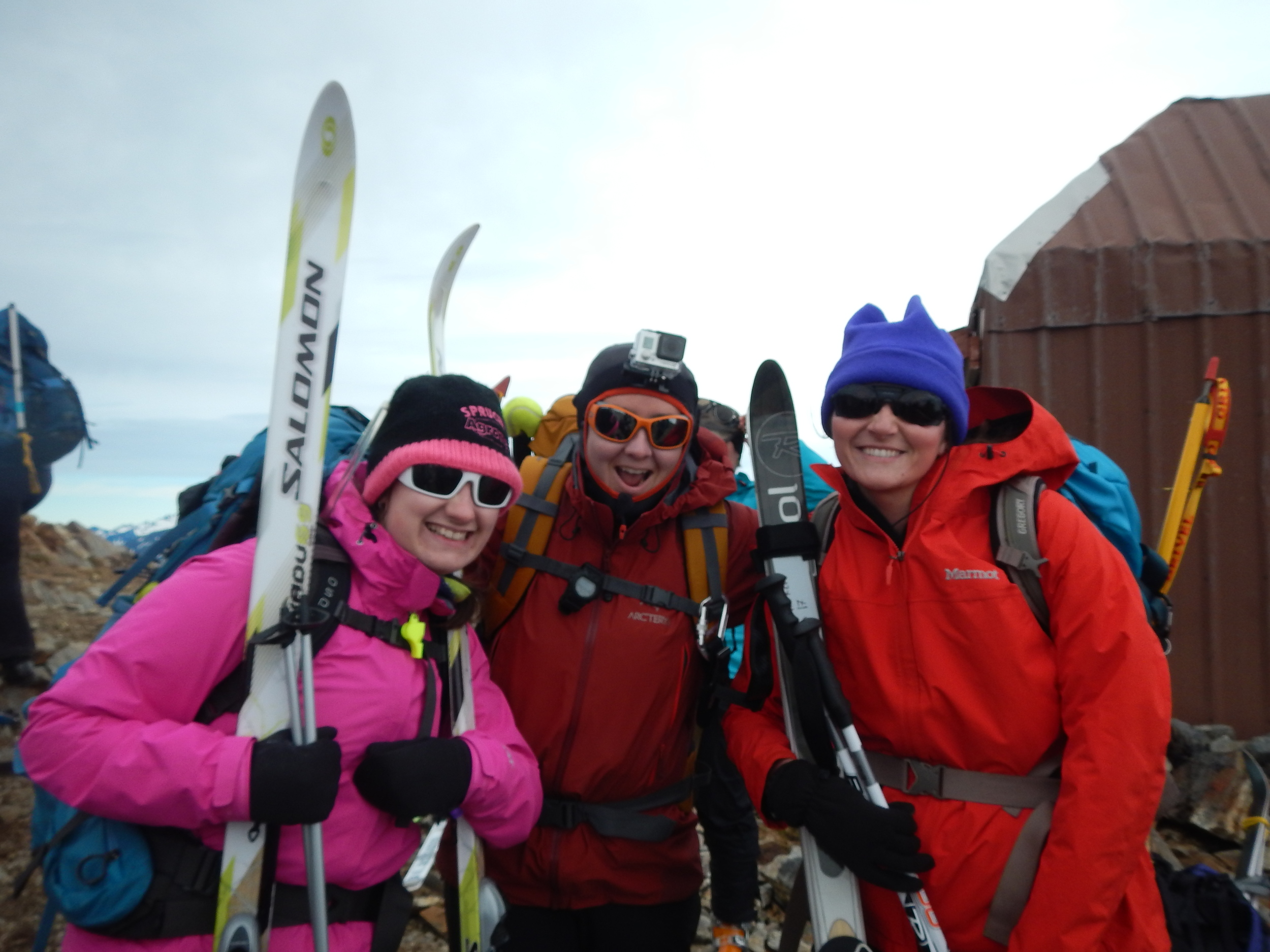by Randall
During the first week at Camp 17, we spent the majority of our time learning all the skills necessary to cross the Juneau Icefield, including everything from tying knots and crevasse rescue to to ski practice. JIRPers come from all over, so skiing ability varies greatly. Some people have never stepped into skis in their entire life, while others are powerful alpine skiers or graceful tele-skiers. Needless to say, ski practice was hilarious and there was non-stop carnage. The first day was full of yard-sales, blood, sweat, and tears.
Ski practice on the Lemon Creek glacier
The former alpine skiers are now in tele set-ups, which is like learning a foreign language. Soft leather boots and free heels make for squirrelly skiing when you’re not used to it. A few of the staffers, are dedicated and experienced tele-skiers (including the JIRP director, Dr. Jeff Kavanaugh, who is probably the best tele-skier on the glacier… and the one with the biggest ego). They have demonstrated the skill and finesse necessary to execute a proper tele turn. After a week of ski practice, everyone can competently ski down any intermediate slope.
Fortunately, there is no lack of ski slopes at Camp 17. Fifty feet to the east of camp is the Lemon Creek Glacier, which offers an excellent bunny slope to start working on pizza-french fry transitions. To the west is the Ptarmigan Glacier (also known as the “Gnarmigan”), a much more formidable slope. It’s steep and covers about 1000 vertical feet. At age 79, Alf Pinchak skis the Ptarmigan every morning before anyone else even wakes up, making all us youths feel lazy.
Looking down the "Gnarmigan" glacier
As a die-hard snowboarder, looking around at the lines on the surrounding peaks is a bit tantalizing. I haven’t skied in six years so I’m way out of my element stepping into two planks rather than one. Hills that would have been like a walk in a park on a snowboard now seem like gigantic mountains and I spend half the day falling and getting back up. At the end of ski practice, I’m usually soaked to the bone with snow filling every bit of clothing I’m wearing. That said; it’s definitely fun to be learning something all over again.
Now that we are all feeling somewhat comfortable in the tele set-ups, most afternoons consist of ski practice on the Ptarmigan (weather dependent). It’s a great way to practice turns when the day’s activities are done. Along the ridge where the Ptarmigan starts, there are various lines down, some steep and some shallow, which allows for skiers of all levels to practice.
Alf Pinchak (age 79) on the right carrying his skies to the Lemon Creek Glacier while a student struggles to get up.
French Alex, Hannah, and Kim during ski practice on the Ptarmigan on a beautiful day

































